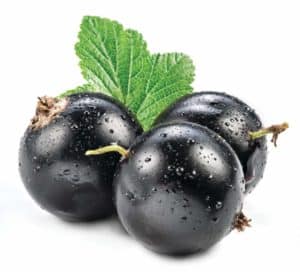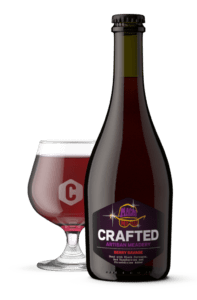
For a cheese with such a stinky reputation, blues are incredibly accommodating when it comes to drinks. This realization came to me this summer as I was travelling to Northern Germany, where the average grocery store shelf holds a wide variety of fruit and vegetable juices. As an American, I went somewhat bananas, thrilled with the tannic grip of black currant juice and the tangy zing of rhubarb, not to mention the differences between apple ciders. These weren’t sweetened and watered down to appeal to a child’s palate; they were full-on flavorful drinks.
Back in the States, I’ve been looking harder for interesting juices, or pressing my own from whatever’s ripe and in season. But I’ve found the intensity of many is too much for fresh cheeses or chunks of sweet cow’s milk mountain wheels; the rush of sugar, acid, fruit-skin tannins, and pure unadulterated flavor needs a cheese that has both richness and bite. Time and again, blues came to the rescue. Here are some top finds.
Black currant juice
Thanks to a US ban on growing this European shrub that lasted from 1911 until 2003 (learn more here),black currants are only beginning to gain an appreciative audience stateside. Across the Atlantic, however, the small berries are highly regarded for both flavor and an abundance of vitamins and polyphenols. Tart, herbal, and spicy, the dark-purple juice has an almost tannic intensity; when it’s lightly sweetened or blended with other fruit juices, it drinks almost like a nonalcoholic Port wine—which makes it a natural match for blue cheese. Try it with Cayuga Blue from Lively Run Goat Dairy in New York State—the leading source of black currants in America.
Grape juice
When you can find fresh Concord grapes—the sort that are so ripe and sweet that you can locate them with your eyes closed—crush them whole, extracting some of the bitterness and tannins from the skins, and pour the juice over ice. Serve with a gentle blue, like a buttery Gorgonzola Dolce PDO.
Beet shrub
It’s easy to make shrub, a tangy vinegar-based drink, with almost any fruit or vegetable at home (find out how here). For this particular drink, I pureed five large beets with 1 cup each of sugar and vinegar, then mixed in salt and black peppercorns. Strained the next day, it’s an intensely fuchsia-colored beverage that’s tangy, earthy, and spicy, with an acidic zip that makes it a versatile pairing with all sorts of blue cheese–infused dishes. It’s also delicious spiked with vodka or gin and served with a blue cheese ball rolled in chopped, toasted walnuts (click here for more cheese ball ideas and tips).
Black tea
Black tea works beautifully with blue cheeses. Its warmth emphasizes the creaminess of the cheese, while its tannins cut through the richness. A smoky tea, like oolong or lapsang souchong, works especially well with a pungent blue like Roquefort PDO; try it with a drizzle of dark honey to really round out the flavors.
Port
When you want to pull out all the stops, it’s hard to beat Stilton PDO with a deep purple Vintage Port from Portugal’s Douro Valley. While there’s an old tradition of upending a bottle into a wheel of cheese to let the wine soak in, it’s best to keep the two separate. That way you can better appreciate the contrast of ripe, plummy fruit and salty, funky tang, and take advantage of the cleansing effect of the wine’s peppery alcohol after each bite. Both are intense and expensive, so wait for a cold, dark night to enjoy them.
Berry-infused mead
Given that blues like berries and a little sweetness—and nearly all cheeses appreciate the cleansing, lifting power of bubbles—a sparkling, berry-infused honey-based brew should be a no-brainer. The only challenge is finding one delicate enough not to clobber the cheese. A session-style version, like the 6% ABV Macho Mead Berry Savage from Crafted Artisan Meadery, makes a refreshing, fun pairing.










